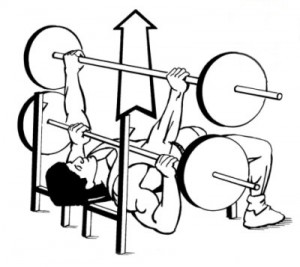A quick guide on nutrition and weight maintenance.
Daily intake of Calories should be split up into three parts, Fats, Carbohydrates and proteins. Although the below percentages would change for different goals.
- Fats – 30%
- Proteins – 10-15%
- Carbohydrates – 55-60%
Now that we have the percentages, which will divide our daily calories up into Fats, Proteins and Carbohydrates, we can now find out how many calories and grams we should be aiming for to achieve these percentages.
Example target weight = 60Kg
Step 1 calculate your BMR (basic metabolic rate) This is the number of calories your body will use as fuel for maintaining basic life functions such as breathing, circulation, brain and nervous system function, body warmth, etc. To calculate your BMR you need to times your desired body weight in Kg by 25, the calculation for the example target weight (60Kg) is below.
BMR calculation - 60 x 25 = 1500Kcal per day
Step 2 calories for your daily activity level – Now we need to add our daily activity level onto our BMR.
Sedentary Life style + 20%
Moderately active life style + 50%
Very active life style + 100%
BMR, calorie intake = 1500Kcal
Activity level = 50% - 1500/50% = 750 +1500 = 2250Kcals per day.
BMR + Activity Level = 2250 Kcal Per day
We now have the amount of calories you should be aiming for per day, so let’s now find out how many calories per Fat, Protein and carbohydrates this would calculate to.
- Fats – 2250 x 30% = 775 Kcal
- Proteins – 2250 x 15% = 337.5 Kcal
- Carbohydrates – 2250 x 55% = 1237.5 Kcal
Now we have worked out calories per Fat, Proteins and Carbohydrates, lets find out how many grams we would need to consume.
- Fats - 775/9 = 86g
- Proteins - 337.5/4 = 85g
- Carbohydrates - 1237.5/4 = 309g
Now you know what calories/Grams to intake per day for Fats, Proteins and Carbohydrates, all that remains now is to track the food you eat daily and ensure that you try to meet your daily intake requirements, as closely as possible.
Now its time to see what foods we should be eating, first let’s start with:
 Carbohydrates:
Carbohydrates:
- Wholegrain Rice
- Wholegrain Bread
- Potatoes
- Wholegrain Pasta
- Fruits
- Vegetables
Fats
- Non-saturated
- Polyunsaturated
- Monounsaturated
- Oily fish (salmon, mackerel, sardines or tuna)
- Extra virgin oil (for cooking with)
- Nuts
Proteins
- Lean meats
- Chicken breast
- Eggs
- Fish
- Milk (Low or non-fat)
- Ham
- Beef
Now finally an example of a daily food diary;
7:30 AM – Breakfast – scrambled egg (1 whole egg 2 whites) with wholegrain bread and porridge (50g oats, 180 – 200ml Milk)
10:30 AM – Small snack – Coffee and Banana
13:00 PM – Lunch – wholegrain rice 250g, 1 – 2 chicken breasts, vegetables and a small salad.
15:30 – Small snack – Piece of fruit or veg and a couple of Brazil and pecan nuts.
18:00 – Dinner – Boiled potatoes, vegetables and fish.
20:30 – Small snack – small bowl of no added sugar alpen 45g
Water – drink at least 2ltrs a day. 500ml before bed to speed up your metabolism and when you wake up.
Remember the above food diary, is an example, so following this diary, might not equate the calories for Fat, Protein and Carbohydrates that you require.
It may take a week or two; to get your food diary to the point that you are getting as close to your daily requirements as possible, so don’t panic if, within the first week you are not hitting these requirements, it’s all about trial and error.
Next post I will put up what percentages of carbohydrates, protein and fats you should be aiming for if you have a goal in mind. Ciao!!!!















